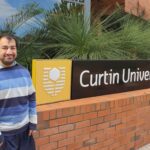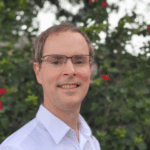Three Curtin University researchers have been named finalists in the 2015 Premier’s Science Awards. The awards recognise Western Australia’s scientific capabilities and achievements and promote the importance of science and innovation in the state.
Professor Kate Wright, Acting Deputy Vice-Chancellor Research and Development, said the awards once again acknowledge Curtin’s growing strength in science and ability to engage the public in scientific research for the benefit of the community.
“From meteors to fungal pathogens to black holes, the finalists are working to reach new scientific frontiers and it is wonderful to see them recognised for their efforts,” Professor Wright said.
The winners of the Premier’s Science Awards will be announced during National Science Week on Thursday 20 August 2015.
Plants and pathogens
Professor Richard Oliver
Chief Scientist of the Centre for Crop and Disease Management
Shortlisted for Scientist of the Year
Professor Richard Oliver from Curtin’s Department of Environment and Agriculture has pioneered a range of molecular genetic tools to study plants and their pathogens, which are now being used worldwide. He has improved the understanding of fungal disease resistance in wheat, barley and a range of other crops at a genetic and biochemical level, and has translated that knowledge into practical outcomes now used routinely by crop breeders and farmers across Australia.
New techniques that he and his team have developed for identifying more disease-resistant cultivars are already bringing multi-million dollar savings to Australia’s agricultural industry and are significantly increasing crop yields.
 Mysteries of the Universe
Mysteries of the Universe
Mr Thomas Russell
PhD student from Curtin’s Department of Physics and Astronomy
Shortlisted for ExxonMobile Student Scientist of the Year
Mr Thomas Russell researches black holes, one of the greatest mysteries of the Universe. Using space-based and ground-based telescopes from around the world, he studies how black holes interact and recycle energy from in-falling matter; an extremely efficient source of power that shapes the formation of stars, the evolution of galaxies and the distribution of matter in the Universe.
Great balls of fire
Fireballs in the Sky
Led by Professor Phil Bland and coordinated by the Curtin Science Outreach program
Shortlisted for Chevron Science Engagement Initiative of the Year
Fireballs in the Sky is an outreach initiative which includes school visits, a travelling exhibit, social media, public events, free teacher resources and a smart phone app that encourages the community to share their skyward observations and engage with science research.
The free app enables fireball (bright meteor) observers to create a simple simulation of what they saw and submit it to the research database. This valuable data contributes to the Desert Fireball Network project, which calculates where meteors originate in the solar system and where they land (if not burnt up before reaching the Earth).
Over 30 custom-made, skyward-facing cameras are dotted across the Australian outback as part of the Desert Fireball Network, with more to come over the next 12 months.
Professor Phil Bland is from the Department of Applied Geology within the Western Australian School of Mines at Curtin.



